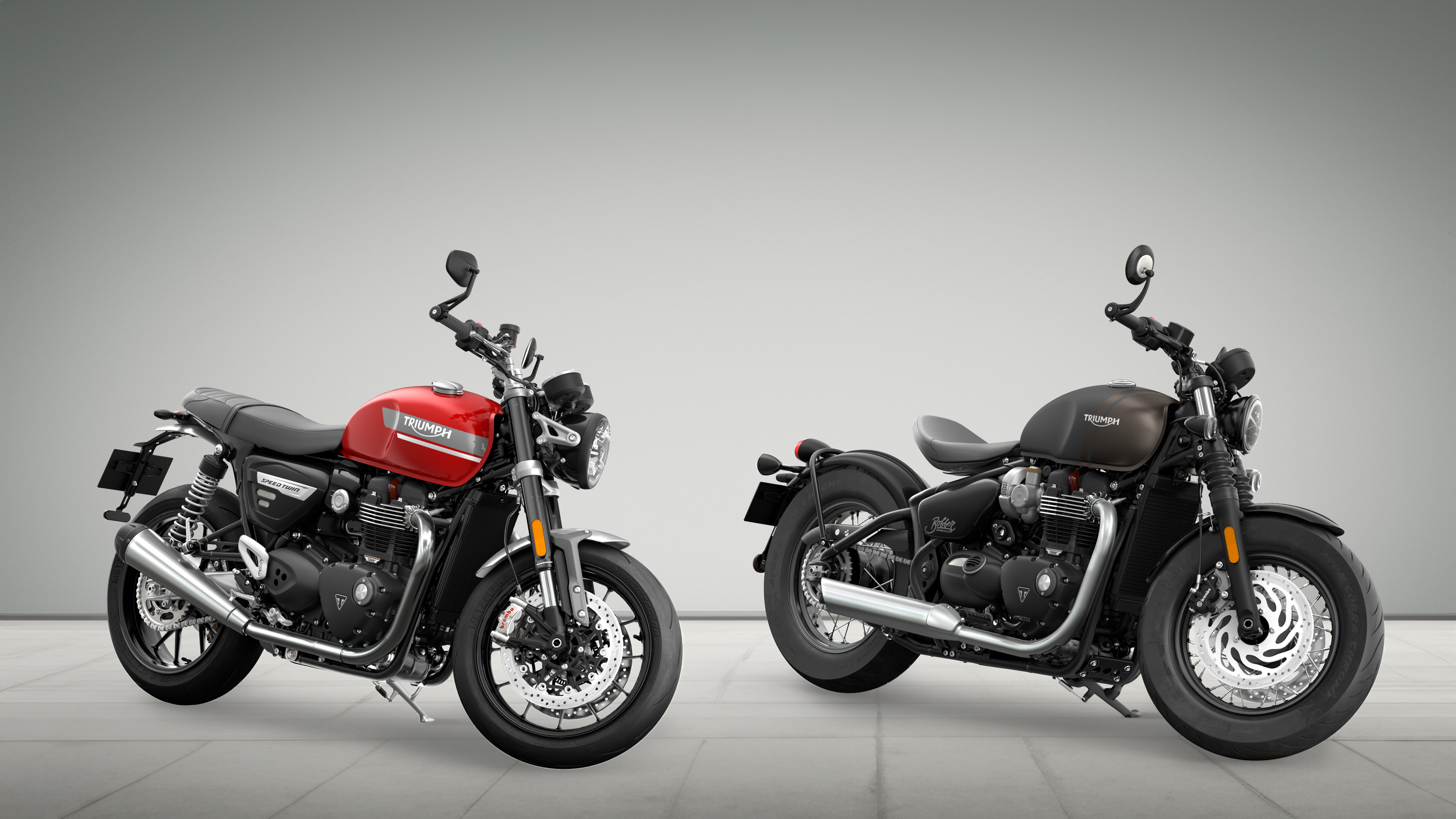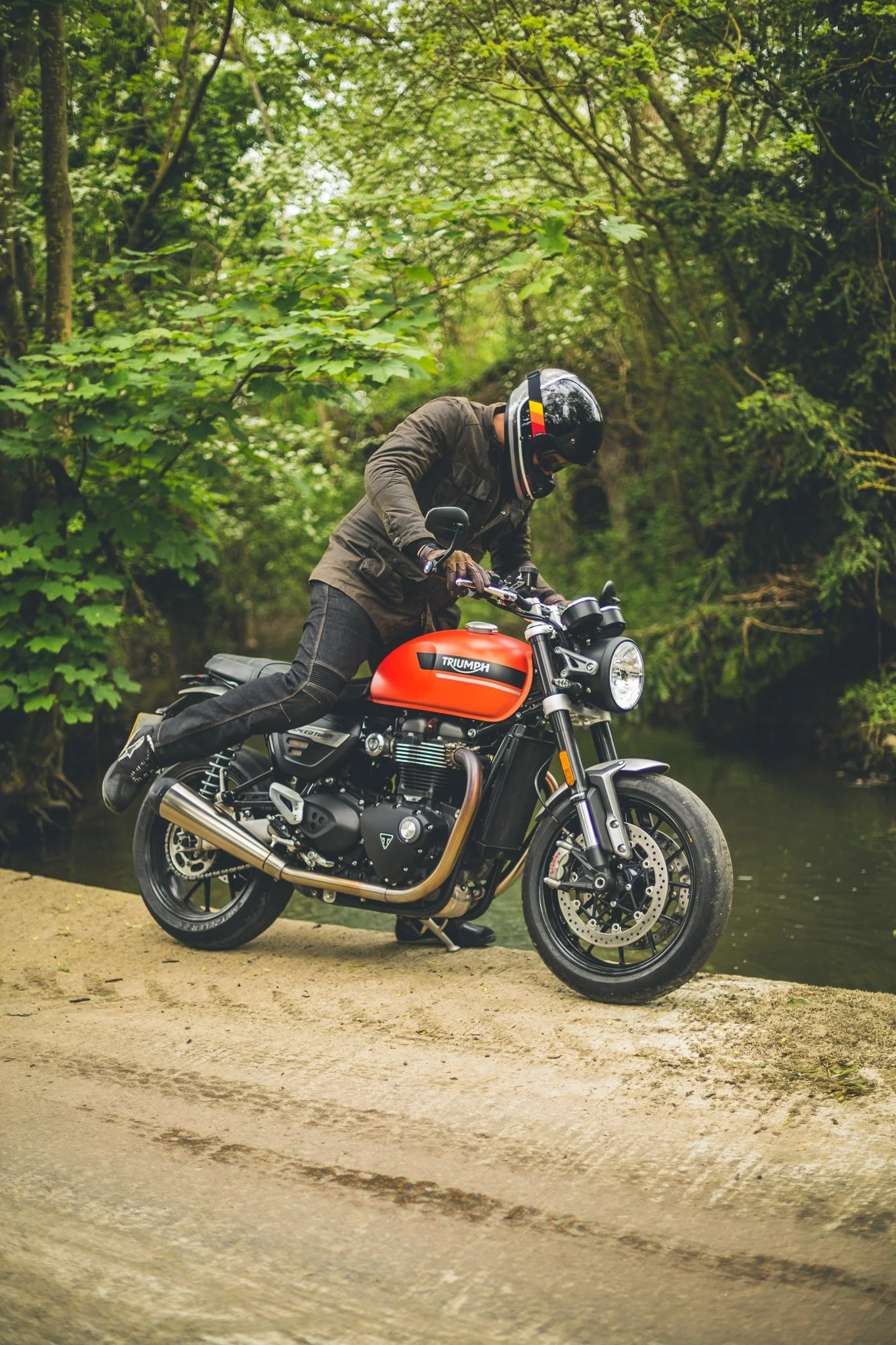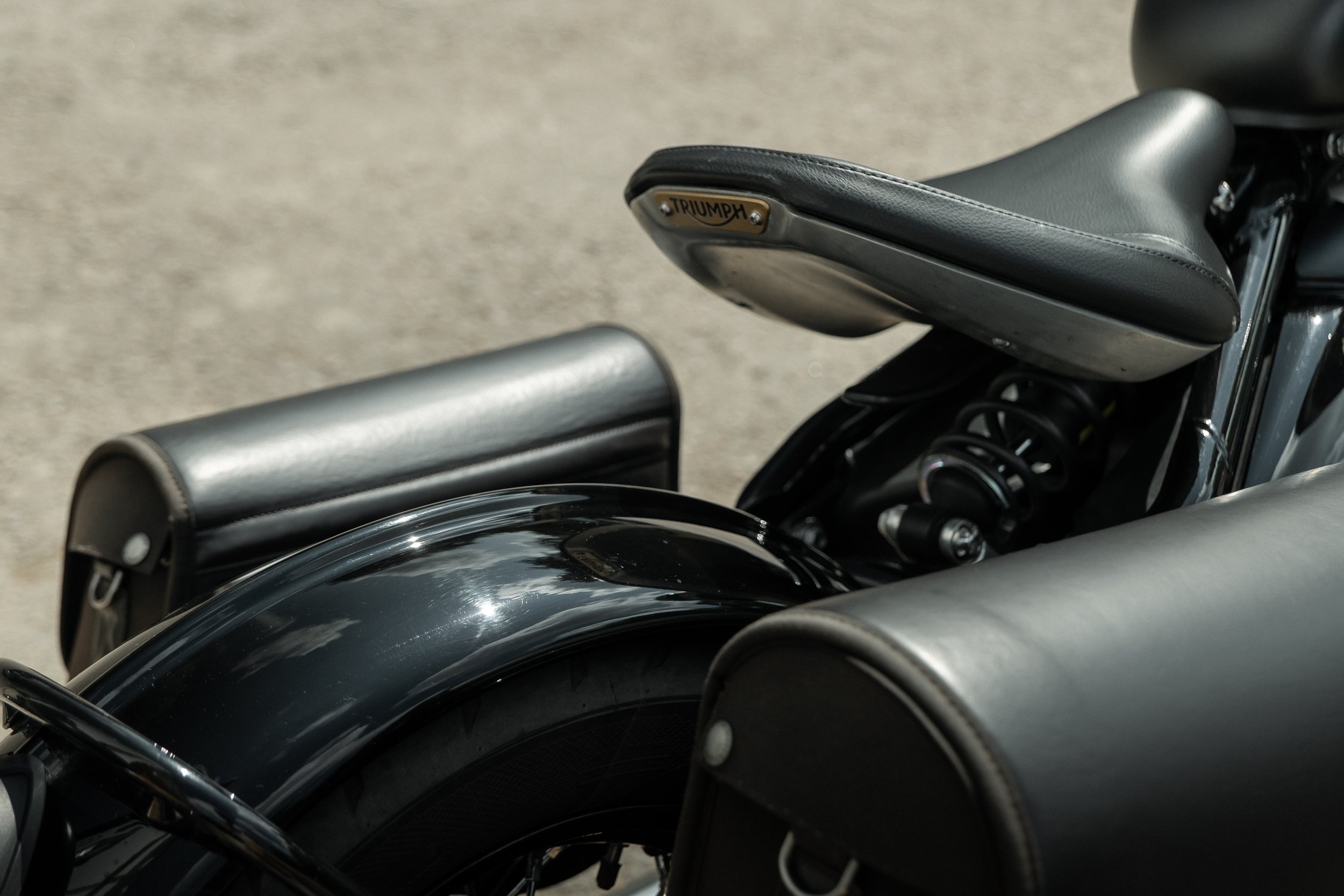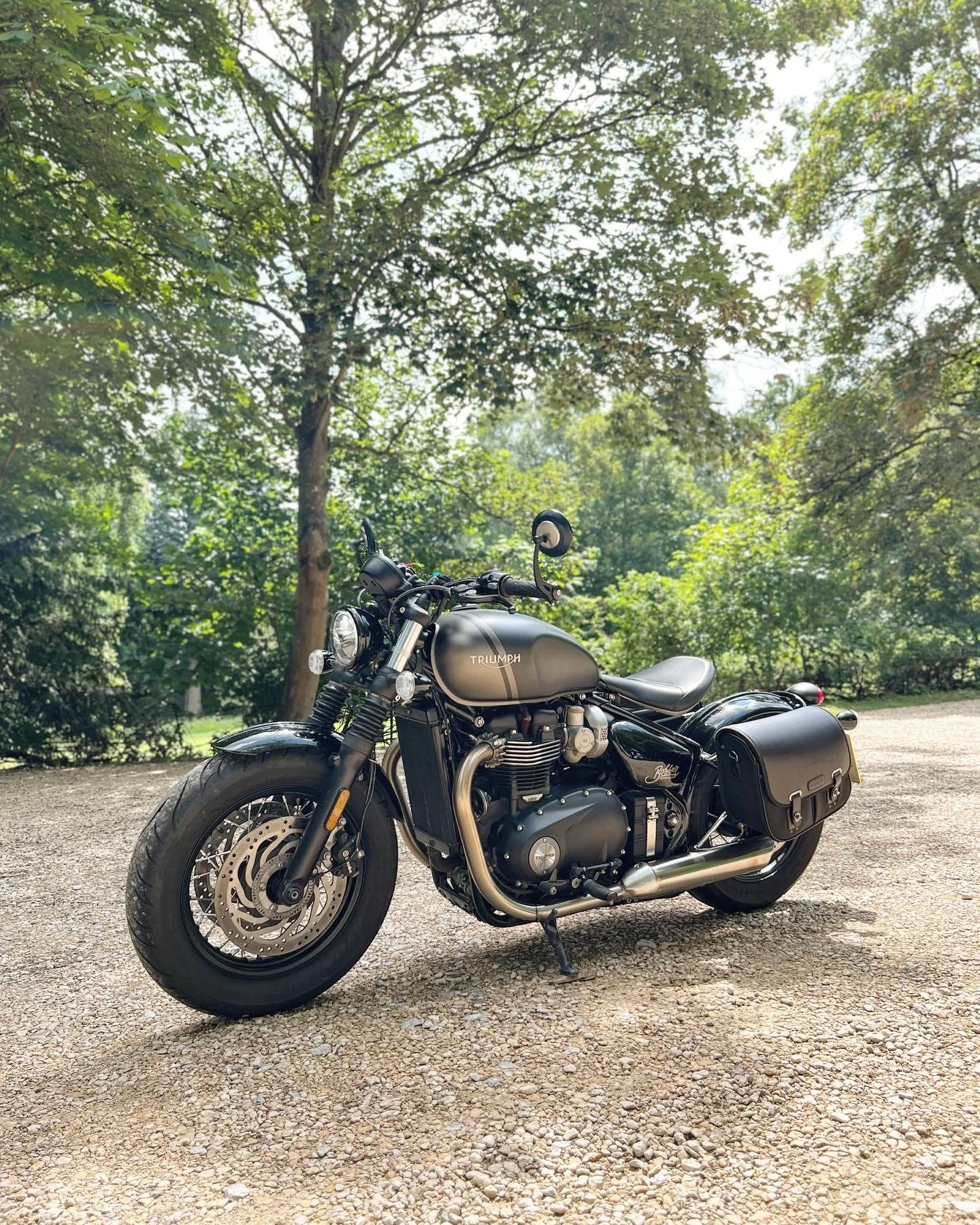Review | Back to back: Triumph Speed Twin 1200 and Bonneville Bobber
In terms of two-wheeled transport, it's been a rather Triumph focussed six weeks or so here at Driven. First up came the delightful Matt Baja Orange Speed Twin 1200 - delivered just in time for the Distinguished Gentleman's Ride, and around four weeks later, the Speed Twin was swapped for the iconic Bonneville Bobber, which stuck around for another couple of weeks.
Now that my time with the bikes has passed, it seems almost bizarre to document that until June 2023, I had not spent any time on a Triumph product - at all. What makes this statement even more ridiculous is that it was arguably the Triumph Bonneville and Thruxton models that helped initially spike my interest in obtaining my motorcycle licence, and that was seven years ago!
So let's start with the Speed Twin 1200, which rolled out of the back of the famous Triumph branded van in June. My first ride on a Triumph was off to a strong start thanks to the Sport Classic styling, a 1200cc HP (high performance) twin-cylinder engine and plenty of familiar branded performance parts such as Brembo brakes and Marzoochi upsidedown suspension forks. The details of Speed Twin are exquisite, with some beautiful styling touches on the instrument clusters and headlight units.
I had very few expectations for the bike, but I had heard whispers from industry colleagues that it's 'even more fun than you expect it to be' - and they were right. In the modern market for stylish bikes, it's becoming more common to see manufacturers producing bikes (and cars to that extent) that are incredible to look at but don't necessarily match the jaw-dropping appearance in terms of the drive, ride and performance.
There's no denying that the Speed Twin 1200 looks fantastic, and many may assume the bike needs to serve little more than the purpose of just being a 'pretty thing', but the reality is, it rides spectacularly too. It's a sporty yet upright riding position, giving a best-of-both-worlds scenario for a mixture of riding styles. The upright position allows for a relaxed ride with minimal weight on the arms and wrists for the slower around-town rides. Once out of town and on the twisty B-roads, the riding position allows for plenty of manoeuvrability, allowing you to take corners as spiritedly or subdued as you wish.
The 1200cc HP engine is a marvel that defines the typical characteristics and physics of a large displacement engine. There are three rider modes to choose from, Rain, Road and Sport, each of which selects an adaptable map to help with power delivery, traction control and ABS. With Sport mode selected, the Speed Twin pushes out an ample 98.6HP at 7250rpm, giving a peak torque of 112Nm at 4250rpm. Equally remarkable is how the engine copes with low-speed riding. Contrary to tradition on bikes of this ilk, the torque-assisted clutch feels light and controllable, and the power is delivered in a way that allows for the ability to crawl and filter without ever feeling like the torque band is ready to thunder in and ride away from you.
The chassis and riding position are equally surprising regarding what you can get away with. As a rider, you be as dynamic or relaxed as you wish. The leg position is sporty and tight, allowing confidence through weight placement. Fast and flowing corners are a dream, and carving through empty roundabouts and across the white lines of country lanes is where the Speed Twin feels most at home; however, the chassis is dynamic enough for the tighter twists and corners that encourage a little more lean angle.
On the grounds of appearance, you would be forgiven for thinking it's a bike that’s exclusively designed to sit pretty outside an artisan coffee shop, but on more than one occasion, I found myself pressing on through fast corners as if I were on a superbike. The Brembo brakes feel sharp to the touch and very controllable. The rear brake offers ample ability to keep corners in check with some subtle trail braking, and if you need to stop quickly, the ABS balance is excellent for scrubbing speed with minimal fuss.
Speed Twin 1200 Vital Statistics:
Engine: 1200cc Liquid-cooled, 8v, SOHC, Parallel Twin
Gearbox: 6 speed
Peak Power: 98.6hp
Peak Torque: 112Nm
Weight: 216kg
Saddle Height: 80cm
Top Speed: 120(+)mph
0-62mph: 3.7 seconds
Priced from: £11,795.00
Price for the model as tested (including options): £12,479.00
(My height & Weight - 184cm (6'1ft) & 90kg)
The Speed Twin 1200 offers many things in one package. It's a bike that looks fantastic, rides brilliantly, and feels genuinely special. My purpose with the Speed Twin was primarily to participate in the DGR, yet it stuck around for an additional four weeks of absolute joy.
My journey with Triumph didn't end there, though. Because on the day it was collected to return to Triumph HQ, something else was dropped off in its place...
The Triumph Bonneville Bobber is a bike I've admired in the classified ads and on the Triumph website since its first launch in 2021. The low seat, classic styling, wire wheels and chunky tyres combine to create an almost impossibly cool bike. The Bobber was the bike I'd initially requested from Triumph before taking delivery of the Speed Twin, but as it rolled off the back of the van, my only concern before heading out for my first ride was that I almost certainly wasn't cool enough to ride it.
Parking the imposter syndrome to one side, it was time to see if the ride stacked up to the looks and following my four weeks with the Speed Twin, my expectations were admittedly quite high.
The Bobber shares the same 1200cc HP engine as seen on the Speed Twin, although thanks to some clever engine mapping, characteristically, it gives a very different feel to the Speed Twin. On the Bobber, it's all about cruising and torque, so the engineers at Hinckley worked their magic to reduce some of the top-end fizz and focus on the low-end grunt. There are just two rider modes on the Bobber, Rain and Road.
In comparison to the Speed Twin, the adapted engine map reduces the peak power from 98.6 on the Speed Twin to 76.9HP, but the peak torque is still an impressively high 106Nm at 4000rpm. This reworking of the power delivery suits the riding position and weight of the bike perfectly and gives a large amount of character in how it accelerates and sounds.
The handing characteristics are equally contrasted, mainly thanks to the seating position - as a rider, you're lower and slightly further back from the peddles. It's not quite a fully foot-forward riding style, but it's more relaxed than the Speed Twin. Thanks to the seating position, the upper body and arms have very little weight on the wrists and shoulders, but this does result in the lower back and bottom taking a little more weight through the bumps and compressions. This is typical for cruiser-style bikes and isn't a complaint; it's just a compromise to the style.
What surprised me most about the Bobber, similar to the Speed Twin, was the rideability at both low and high speeds. The one thing I didn't expect was an effortless ride through slow sections of town centre traffic, but again, like the Speed Twin, the clutch control feels light and easy, and despite the torque-derived power delivery, at no point did I feel the bike wanted to chug away from underneath me once the clutch was released. One of the benefits of the bike's design is a considerably lower centre of gravity which means balancing through tight spots and manoeuvring around obstacles is beautifully and surprisingly simple.
Once out of town and onto the twisty B-roads, the Bobber comes into its own and takes pretty much anything you could throw at it. I even found myself scraping the footpegs through the corners several times due to the slightly lower peddle position, but it's a credit to the confidence-inspiring ride. Once you find the limit, it's easy to adapt the cornering approach to avoid those surprise scrapes while still getting a good lean.
With the higher speeds does come one more minor compromise to the styling; the wind buffetting. Again, much like the effects on the lower back, thanks to the seating position, it wouldn't be right to class this as a complaint because it's not. If regular 70+mph motorway commutes are a thing for you, then sadly, the Bobber possibly isn't the right bike. There is absolutely no aero protection, meaning anything beyond 60mph gets pretty exhausting pretty quickly. On the few occasions I did ride on 70mph duel carriageways and motorways, my shoulders, neck, and head took a considerable battering from the wind. I found the sweet spot for speed was 40-60mph, which was easily bearable for me at 6'1/185cm.
Another unexpected feature of the Bobber is cruise control. It is included as standard on all model variants, and whilst it's nothing fancy, it reduces fatigue for longer rides and is a saviour through the dreaded average speed check zones.
Bonneville Bobber Vital Statistics:
Engine: 1200cc Liquid-cooled, 8v, SOHC, Parallel Twin
Gearbox: 6 speed
Peak Power: 76.9hp
Peak Torque: 106Nm
Weight: 251kg
Saddle Height: 69-70cm (adjustable)
Top Speed: 120(+)mph
0-62mph: 3.7 seconds
Priced from: £12,995.00
Price for the model as tested (including options): £14,490.00
(My height & Weight - 184cm (6'1ft) & 90kg)
The compliance and performance surprised me more on the Bobber than on the Speed Twin. I was expecting a comfortable head-turner with some occasional straight-line performance. I wasn't expecting to feel anywhere near as engaged or enthused firing it down my local country roads as I did - it’s spectacular! On top of the positive handling, it's an utterly immersive bike to ride at speed. The exhaust pipes sound spectacular, with subtle rumbles and pops on overrun and downshifts. And when taking advantage of the wide torque band, you're rewarded with a variance of sounds from the intake between your legs and the exhaust on either side. It's near-magical.
Rather fittingly, on my final full day with the Bonneville Bobber, I travelled from Warwickshire to London to see the unveiling of two brand-new bikes from Triumph. The unveiling took place at the iconic Bike Shed in Shoreditch, and the trip to see the new bikes involved a 250-mile round trip from my home in Warwickshire to London and back.
I wouldn't want to make 120-mile commutes a regular habit on the Bobber, but at 65mph with the cruise control active and some fancy ear defenders in, I was once again surprised by the bike's compliance and ease.
The Speed Twin 1200 and the Bonneville Bobber are two very different bikes with one exceptionally brilliant shared trait: Exceptional style without any compromise.
Words: John Marcar
Pictures: Henry Faulkner-Smith & Triumph
Special Thanks: Triumph UK







































